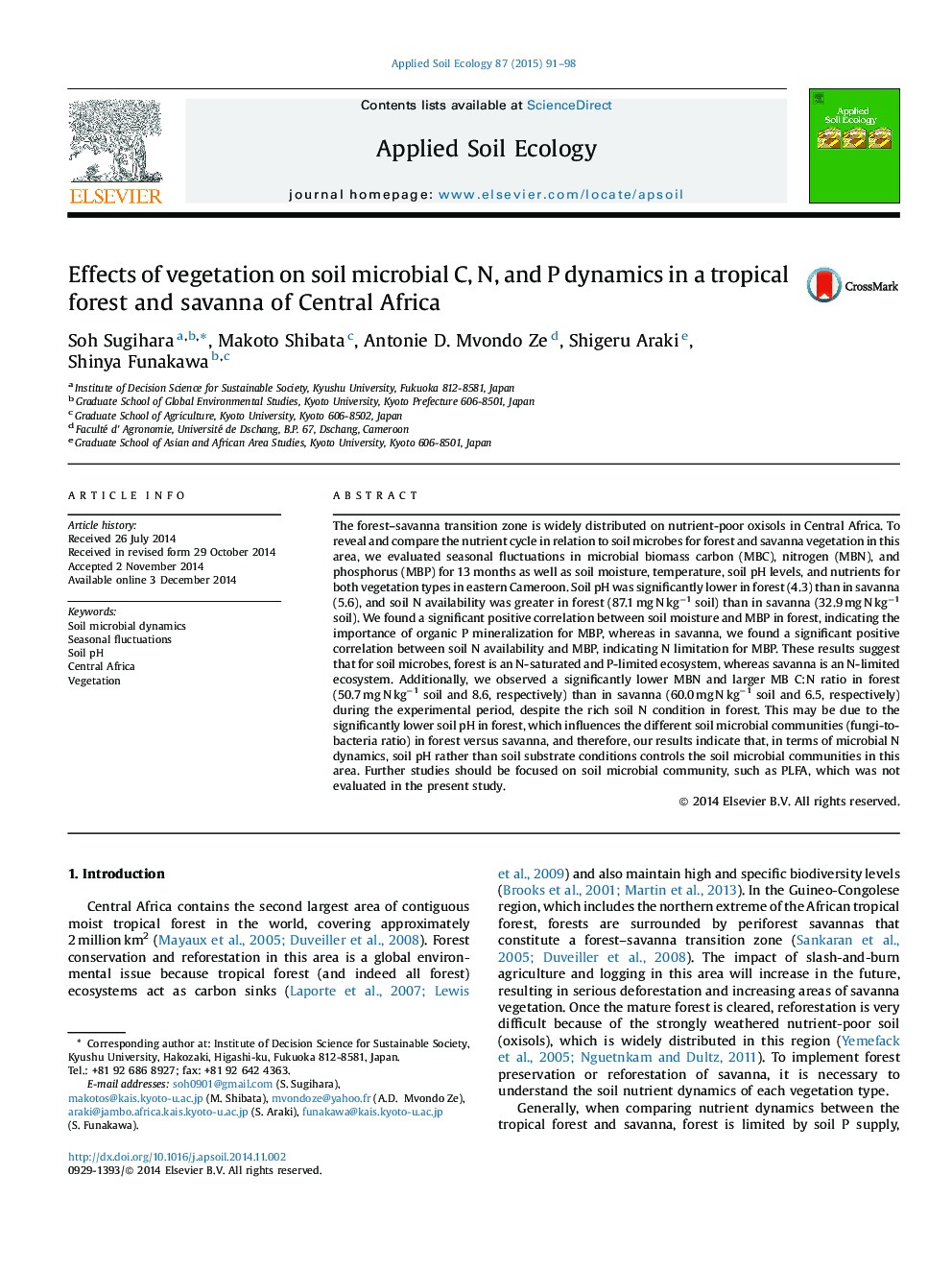| کد مقاله | کد نشریه | سال انتشار | مقاله انگلیسی | نسخه تمام متن |
|---|---|---|---|---|
| 4382055 | 1617796 | 2015 | 8 صفحه PDF | دانلود رایگان |

• Lower soil pH and higher available N values occur in forest than in savanna.
• Organic P and Ext-N control MB dynamics in forest and savanna, respectively.
• Forest is a P-limited ecosystem, whereas savanna is an N-limited ecosystem.
• MBN is lower in forest than savanna, despite the N-rich soil conditions.
• Soil pH rather than soil nutrients primarily controls microbial communities.
The forest–savanna transition zone is widely distributed on nutrient-poor oxisols in Central Africa. To reveal and compare the nutrient cycle in relation to soil microbes for forest and savanna vegetation in this area, we evaluated seasonal fluctuations in microbial biomass carbon (MBC), nitrogen (MBN), and phosphorus (MBP) for 13 months as well as soil moisture, temperature, soil pH levels, and nutrients for both vegetation types in eastern Cameroon. Soil pH was significantly lower in forest (4.3) than in savanna (5.6), and soil N availability was greater in forest (87.1 mg N kg−1 soil) than in savanna (32.9 mg N kg−1 soil). We found a significant positive correlation between soil moisture and MBP in forest, indicating the importance of organic P mineralization for MBP, whereas in savanna, we found a significant positive correlation between soil N availability and MBP, indicating N limitation for MBP. These results suggest that for soil microbes, forest is an N-saturated and P-limited ecosystem, whereas savanna is an N-limited ecosystem. Additionally, we observed a significantly lower MBN and larger MB C:N ratio in forest (50.7 mg N kg−1 soil and 8.6, respectively) than in savanna (60.0 mg N kg−1 soil and 6.5, respectively) during the experimental period, despite the rich soil N condition in forest. This may be due to the significantly lower soil pH in forest, which influences the different soil microbial communities (fungi-to-bacteria ratio) in forest versus savanna, and therefore, our results indicate that, in terms of microbial N dynamics, soil pH rather than soil substrate conditions controls the soil microbial communities in this area. Further studies should be focused on soil microbial community, such as PLFA, which was not evaluated in the present study.
Journal: Applied Soil Ecology - Volume 87, March 2015, Pages 91–98